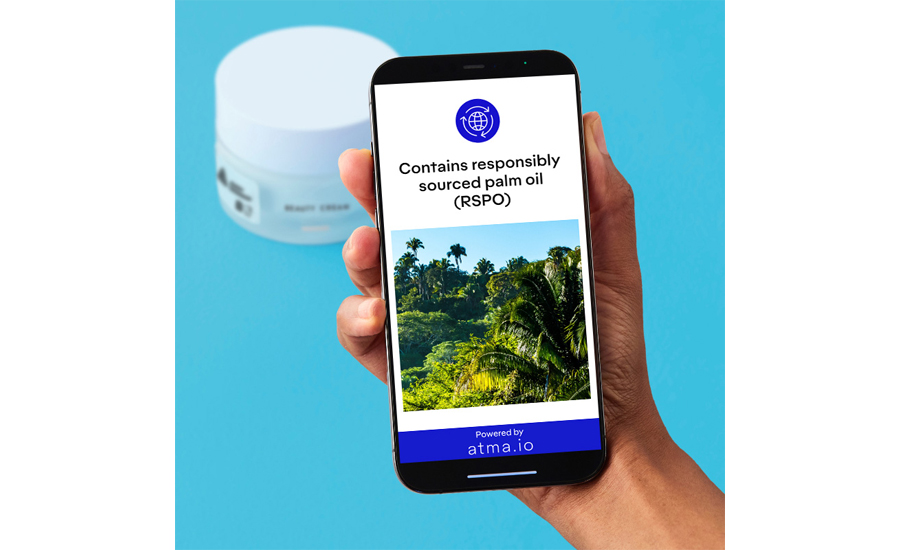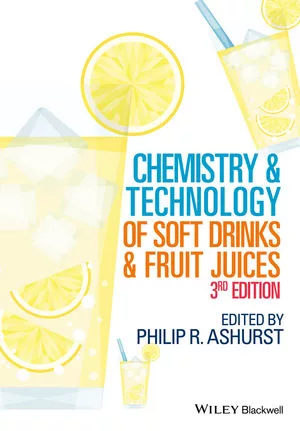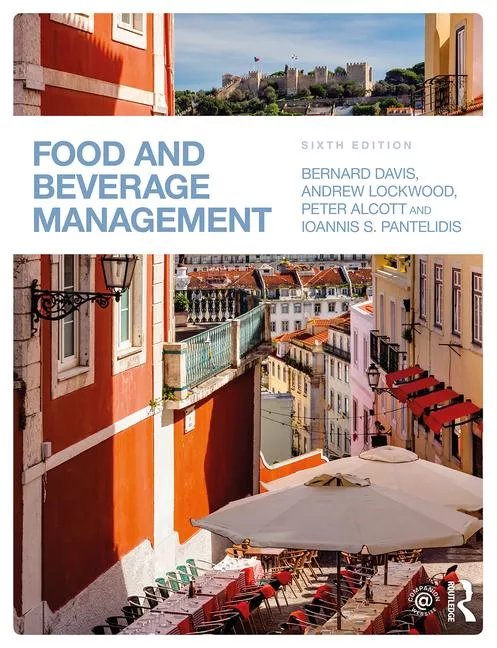Packaging Materials
Beverage market taps into smart labeling technology
Intelligent labels further branding, security

Frederick Wildman and Sons released augmented reality (AR) experiences for its Santi and Nino Negri wine brands. Unlocked via a QR code on the neck of the bottle, users are taken to a suite of educational tools such as a guided wine tasting, food pairings, the history of the bottle and winery, and more.
(Image courtesy of Frederick Wildman and Sons)
When it comes to smartphone usage, American consumers are seeing their time on the devices climb. According to “The Nielsen Total Audience Report,” April 2020, nearly half (46 percent) of all time spent on media among adults 18-34 is on smartphones.
Given the amount of time that consumers are spending on their smartphones, brand owners are finding more ways to tap into this engagement beyond social media channels.
“Consumers have endless access to the Internet via smartphones” says Gwen Chapdelaine, marketing director at Fort Dearborn Co., Elk Grove, Ill. “Smart packaging allows brands to connect with consumers wherever they are and gives them access to more information at their fingertips, even right in the grocery store. They also allow brand owners to collect data regarding their consumers and supply chain.
“For beverages, labels and packages have limited space for content,” she continues. “With a simple scan, smart labels can expand packaging content to give consumers recipes, additional product information (nutrition facts, recycling instructions, etc.), promotional/seasonal content, contests and interactivity. For labels and packaging using VR (virtual reality) and AR (augmented reality), it’s an opportunity for brand enhancement by bringing the products to life to tell a story or animate characters. We’ve seen some of these applications used in the wine and liquor markets.”

(Image courtesy of Avery Dennison Smartrac)
Pedro Garza, marketing development manager of food for Avery Dennison Smartrac, adds that the emergence of the COVID-19 pandemic adjusted how consumers shop, which in turn elevated the adoption of smart labeling technology.
“This forced change in consumer behavior spurred retail models to quickly evolve and accelerate their digital transformation initiatives so that they can capture the burgeoning share of mouth movement online as well as offer their customers new ways to shop,” he explains. “These digital and touchless initiatives have led to the rise of intelligent labels to help enable a variety of use cases such as automating and digitizing inventory, enabling traceability and transparency within the supply chain, as well as lead to more touchless experiences for the consumer.
“COVID-19 has accelerated the adoption of contactless technologies including Near-Field Communication (NFC),” Garza continues. “We have seen an increased adoption in the technology as a means of pre-sales consumer interaction, tap-to-pay technologies and many post-sale engagements. The post-sale engagements include many use cases such as instruction on use of the products, future incentives/coupons and customer loyalty programs, brand protection with authentication and the most popular with re-ordering.”
Secure solutions
Although smart labels can offer an abundance of benefits to brands owners, experts note that the security aspects are one of the most enticing attributes.
Fort Dearborn’s Chapdelaine highlights the role that smart labels are playing in safety and security measures for the beverage market.
“Smart labeling can be used in product tracking and security,” she says. “We have recently developed an in-line application process to adhere EAS (electronic article surveillance) tags to the inside of a shrink sleeve label for theft reduction. The tag triggers the store alarm if the product is not purchased. Digital codes, watermarks and tags can also be used for anti-counterfeiting to verify product authenticity for consumers.”
In addition to brand owners realizing the benefits of smart labels, consumers also recognize the safety and security they can provide.
“Research shows that consumers are willing to pay more for products that can show them where ingredients come from,” Avery Dennison Smartrac’s Garza says. “This demand for transparency and traceability is a trend that brands and retailers are designing around to bolster their supply chains while also providing more information to their customers. Intelligent labels such as RFID, when combined with digital traceability platforms, can be a powerful tool to tell the end-to-end story of a product as well as making it easier to trace in the event of a recall.
“Brand protection is a key driver with NFC technologies ― specifically when the product is a consumable,” he continues. “The attention to authenticating the product directly correlates to a much needed safeguard on overall well-being of the consumers. Embedding an NFC tag behind the label provides an opportunity for a seamless interaction with no line-of-sight required to provide assurance to the consumers. At a fraction of a cost, providing this level of assurance creates higher levels of brand protection and increases the lifetime value of the consumers to the brands.”
Adopting for the masses
As smart labels gain more traction in consumer packaged goods (CPG), experts note that the technology’s adoption within the beverage market is pointing to a promising future.
“The beverage market is quickly gaining traction as brands are becoming more agile in their ability to provide digitized solutions; COVID-19 certainly exposed the need for such agility within the supply chain,” Garza says. “The CPG segment has traditionally been a key driver for the adoption of digital ID solutions like NFC technologies. It is great to see that brands are now moving toward an offering at a unit level versus the traditional packaging levels to ensure that each digitized product has a unique connection to the consumers.”
Kim Flynn, marketing manager at Hammer Packaging, a Fort Dearborn company, suggests technology usage remains early in the beverage market for adoption, but she is seeing a diverse set of uses for the technology.
“Smart labeling in the beverage industry is still emerging,” Flynn explains. “We’ve seen more creativity with AR and VR in the wine and spirits market. We have customers who utilize the embedded label codes for functional uses such as store check-out scanning, improved throughput and supply chain tracking. We expect to see wider adoption of various technologies such as NFC, conductive inks, etc., as the costs to implement decrease.”
When utilizing smart labels, Flynn highlights the importance of keeping the consumer in mind.
“For consumers, the easier the technology is to use, the more engagement a brand can expect from consumers,” she says. “There are smart labeling technologies that include a code on the label or are embedded into the overall label so consumers can scan anywhere on the package to access additional content and promotions.”
Avery Dennison Smartrac’s Garza notes that RFID and NFC technologies have been growing in adoption, but the need states will dictate which solution companies are looking to employ.
“Because RFID is a ‘one-to-many’ technology, it allows retailers and brands to quickly capture hundreds of items in a matter of seconds allowing for increased inventory visibility, which can then be digitized online to optimize omnichannel shopping,” Garza says. “NFC is favored for brands wanting to enable consumer interaction on a one-to-one basis with their products, using their smartphone as an example.”
To meet the growing needs associated with smart labels, Avery Dennison announced atma.io from the company’s connected product cloud.
“atma.io is a new digital platform that connects digital triggers to track, manage and store all of the events associated with an individual product across its lifecycle,” he explains. “By offering the widest range of digital triggers with this new connected product cloud, we can help brands and retailers create a digital bridge for all physical products. Such a solution set can help brands and retailers achieve 99 percent inventory accuracy, drive labor reduction, minimize out of stocks, and improve the online ordering experience.”
To serve today’s smart label adopters, Fort Dearborn’s Chapdelaine notes the company offers an array of solutions, including printing codes, triggers for augmented reality, digital watermarks, as well as NFC, EAS and RFID.
“For shrink sleeves, we provide EAS and RFID tag application making the tags neatly hidden and functional,” she adds. “We also have partnerships and resources for AR and VR development.”
With so many resources to provide beverage-makers, Chapdelaine prognosticates that smart labels will become a solution for a growing group of brand owners.
“As more marketing goes online, we’ll see an increase in promotional uses for smart label technology in beverages,” she says. “Brands are always trying to drive consumer engagement on social media, utilizing technology already at their fingertips. We also expect to see an increase in functional labeling for supply chain, security and tracking, as new options are emerging for integrated digital technology and printed packaging.”
Avery Dennison Smartrac’s Garza also remains bullish about the future of smart labels and the beverage market.
“In the very near future, we will live in a world where every single item in the beverage market will have a unique digital identity and a digital life, which will be enabled by the adoption of intelligent labels,” he says. “This will unlock use cases that we may have not even conceptualized yet. Brands will be better able to tell their end-to-end story, retailers will be able to conjure richer consumer experiences at retail, and we’ll design ways to enable a more circular economy that maps to a zero-waste future. We think that’s a future everyone can buy into.
“The future of smart labeling technologies is an exciting one, which now opens the door for limitless applications,” Garza continues. “This creates an opportunity for brands and consumers to better understand each other with one common bond that has brought them together: digital transformation. The beverage market is headed toward an exciting era of more data points, smarter consumers that have sustainability at the top of mind and providing them with products that are best-fit to support these initiatives provides a circular economy, which in-turn will accelerate more adoption of technologies such as NFC.”
Looking for a reprint of this article?
From high-res PDFs to custom plaques, order your copy today!








